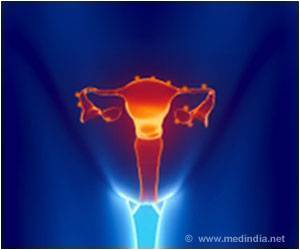Mathematical model explains why metastasis often arises early in cancer rather than late.

‘Mutations that lead to metastasis, the spread of cancer to sites distant from the primary tumor, often arise early, rather than late, in a tumor history.’





Qian and Akçay suggest that incorporating evolutionary and ecological theory into cancer biology may help guide more effective treatment plans."In the public consciousness it often seems like cancer is this big, unitary disease that we need to beat somehow, like polio, which it isn’t," says Akçay. "Each cancerous tumor is a community of essentially different ’species’ doing different things."
"Understanding how cancer evolves," adds Qian, "may help us to predict which lineage will come to dominate in a tumor and, possibly, preemptively treat that to minimize the chance for drug resistance. Or, if we can predict what sort of evolutionary mechanisms cause metastasis, we can try to tackle that before metastasis even starts."
Cancer cells don’t simply dwell and reproduce amidst normal cells; they actively modify the environment around them to make it more conducive to their own growth. This process may entail enhancing blood-vessel formation or altering the structure and metabolism of nearby cells. Cultivation of the so-called tumor microenvironment, or tumor niche, isn’t limited to neighboring tissues, however. Metastasis arises when malignant cells secrete factors through the bloodstream to distant sites in the body as a way of readying new spaces for cancer to grow.
"It’s like humans. We prepare our kids by creating college funds and things like that," Qian says. "Cancer is doing the same thing. It’s preparing a distant site that its kids will one day migrate to."
Advertisement
Imagining a primary tumor, the researchers crafted a model tumor composed of four types of cancer cells: producers that help construct the tumor’s immediate microenvironment; producers that help construct distant, pre-metastatic sites by secreting various molecules; producers that do both of these tasks (and bear twice the cost in resources); and cheaters, which do not contribute to niche construction (and thus sacrifice fewer resources).
"The mutants that contribute to pre-metastatic niches are more likely to arise in bigger tumors, but are less likely to establish themselves in those tumors," Akçay says. "That’s the tradeoff." "This would predict that some smaller tumors are actually more likely to lead to metastasis," Qian says, a finding supported by recent observations showing that, indeed, cancer-cell mutations that arise early are more likely to be the source of metastatic disease.
"It happens a lot," Qian notes, "that by the time a lot of patients identify the primary tumor, there are already the seeds of metastasis elsewhere in the body. So even if you successfully treat the primary tumor, the metastases could take more years to grow and well up later." While concerning, the study does suggest that cancer therapies may benefit from considering a tumor as an ecosystem, one with clashing and cooperating populations of cells that could be manipulated to a patient’s benefit.
"I think you can bring a lot of ecological and evolutionary theory to bear in designing treatments," Akçay says. "There are people who are looking at optimal treatment schedules for controlling the expansions of cell populations and trying to disrupt the dynamics that would allow cancerous and metastatic tumors to grow.
"We’re not there yet--our model is still trying to understand the basic idea--but I think ideas like that can eventually find their way into treatment design."
Source-Eurekalert














